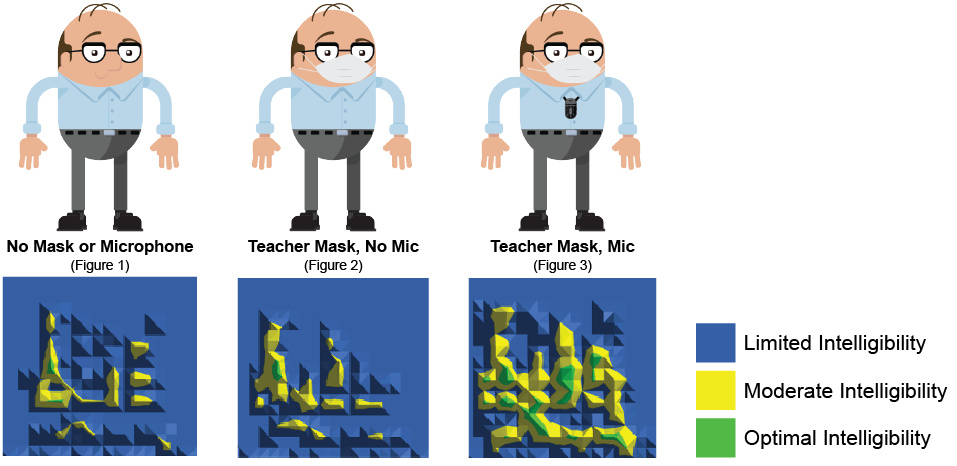Teacher Masks and the Need for Audio Enhancement
These are unusual times. As students and teachers return to schools, wearing masks may become the next normal. Ensuring every student receives proper volume and clarity of instruction and can understand what is being taught can already be a challenge with the normal background noise of a classroom environment. With teachers needing to speak from behind a mask, classroom audio solutions become an essential tool in student education.
How does wearing a mask affect classroom communication?
We conducted research to understand how wearing a mask would affect communication in the classroom. The study was conducted with a video camera and type 1 real time analyzer/sound level meter positioned 25 feet from the speaker to capture what a student sitting furthest from the teacher would hear. The results show there is a significant difference in the quality of the teacher’s voice when he or she wears a mask. From a student listener’s perspective, masks interfere with the teacher’s ability to communicate effectively.

The figures below represent the same sentence spoken by a teacher. Figure 1 shows the sentence spoken with no mask or microphone. Figure 2 shows the sentence spoken through a mask, still with no microphone. Figure 3 represents the sentence spoken through a mask while using a Teacher Microphone. The colors within each data block represent the levels measured at 1/3 octave frequency bands—green illustrates normal conversational level; yellow represents a quieter speech level at risk of being lost in background noise; and blue shows audio that is mostly lost in background noise.

This research demonstrates that using a microphone has a substantial impact on the clarity of teacher communication from a student listener’s perspective. Without sound enhancement, much of what a teacher says may get lost in the normal background noise of a classroom. This indicates that Classroom Audio greatly reinforces a student’s ability to clearly understand what is being taught.
